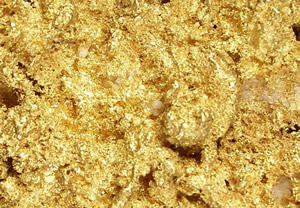 Let's start with Gold because it arguably is one of the most precious of the materials found on the island. The first Gold was actually discovered way back in 1725, rather than the 1800's. This was when the Dutch West India Company sent out explorer Paulus Printz to the area. His task was to find out whether Gold and Silver resided on the islands. He found nothing on the first two, but by the time he got to Aruba, he discovered some. Although at this time, the extraction of the small amount of gold here wasn't enough to make the project financially viable, which meant Paulus was called back to Amsterdam. However, in a time when amateur gold searchers were all the rage, a number of people around the Netherlands began to hear information about the spoils that could potentially be waiting on Aruba. Over 100 years later, people began to descend on Aruba with dreams of finding gold. In fact, during this time, more people headed to the island than ever before. Now, I won't go into a lot of depth on what was discovered over time, that is a rather long history, suffice to say though, there was a lot of gold here, and it seemed the area which the Spanish dubbed the 'useless islands' no longer seemed to be useless. Sure, there wasn't as much gold here as other areas of the world, but there certainly was enough to give a nice little boost to the economy.
Let's start with Gold because it arguably is one of the most precious of the materials found on the island. The first Gold was actually discovered way back in 1725, rather than the 1800's. This was when the Dutch West India Company sent out explorer Paulus Printz to the area. His task was to find out whether Gold and Silver resided on the islands. He found nothing on the first two, but by the time he got to Aruba, he discovered some. Although at this time, the extraction of the small amount of gold here wasn't enough to make the project financially viable, which meant Paulus was called back to Amsterdam. However, in a time when amateur gold searchers were all the rage, a number of people around the Netherlands began to hear information about the spoils that could potentially be waiting on Aruba. Over 100 years later, people began to descend on Aruba with dreams of finding gold. In fact, during this time, more people headed to the island than ever before. Now, I won't go into a lot of depth on what was discovered over time, that is a rather long history, suffice to say though, there was a lot of gold here, and it seemed the area which the Spanish dubbed the 'useless islands' no longer seemed to be useless. Sure, there wasn't as much gold here as other areas of the world, but there certainly was enough to give a nice little boost to the economy.
This wasn't the only natural product that was exploited in Aruba though. During the 1800's, a new material was discovered here that wasn't as precious as gold, but certainly a lot more useful. This was phosphate, a sort of limestone made from the droppings of seagulls on the island. This was commonly used as fertilizer. An interesting fact here is that this Phosphate was actually a different colour to what had been seen before, in fact, it appeared in a multitude of different colours. This meant that it contributed to the name of Seroe Colorado, which literally means coloured hill. Over the years, Phosphate product picked up significantly. In fact, at one point, this material alone was bringing in enough money alone to finance the surrounding islands. However, the income of Phosphate was short lived, and as we entered the 19th century, sales eventually began to dry up, and it was no longer the powerhouse it used to be. Phosphate is still gathered from the region from time to time, but certainly not in the huge quantities that the area used to be known for, and due to advancements in technology it is unlikely whether production will ever get up to these levels again, which is a great shame.
**** End of part 6 ****
History of Aruba, Part 1. The Name - Publisching Date: 13th of June 2013
History of Aruba, Part 2. The Arowak Indians - Publisching Date: 16th of June 2013
History of Aruba, Part 3. The Spanish - Publisching Date: 19th of June 2013
History of Aruba, Part 4. The Dutch - Publisching Date: 22th of June 2013
History of Aruba, Part 5. The English - Publisching Date: 25th of June 2013
History of Aruba, Part 6. Gold and Phosphate - Publisching Date: 28th of June 2013
History of Aruba, Part 7. The Aloe - Publisching Date: 1th of July 2013
History of Aruba, Part 8. The Oil and WWII - Publisching Date: 4th of July 2013
History of Aruba, Part 9. Separation - Publisching Date: 7th of July 2013
History of Aruba, Part 10. Independence - Publisching Date: 10th of July 2013